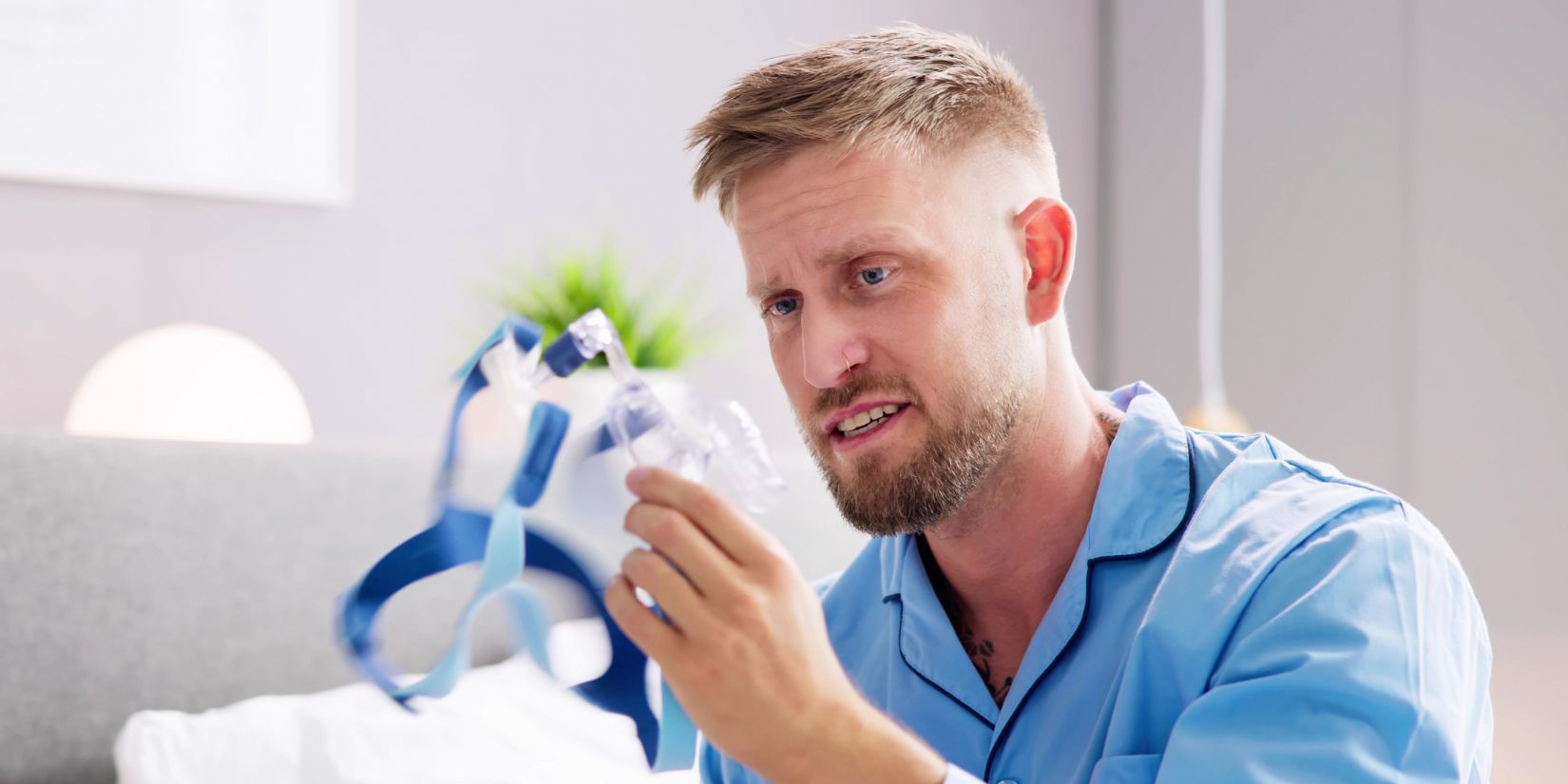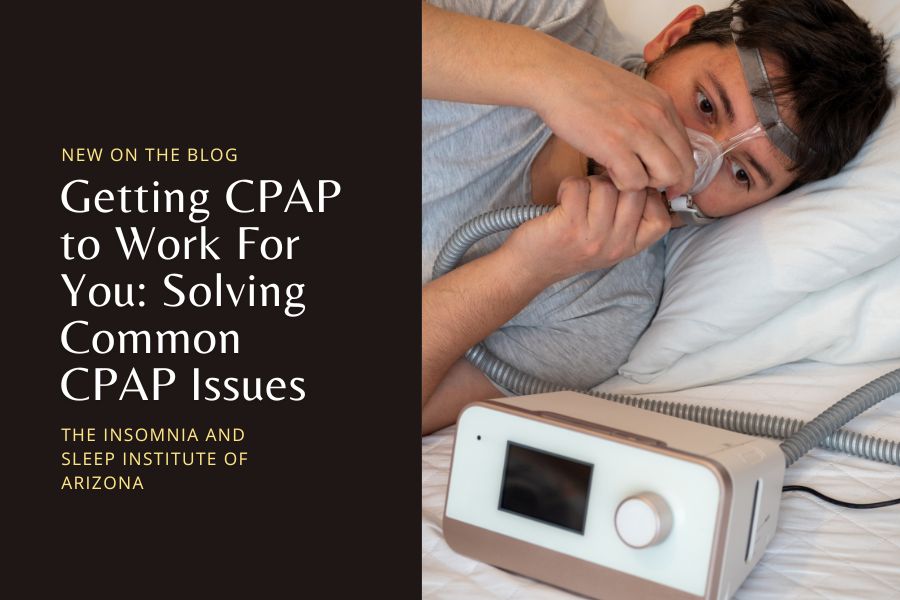Nearly 50% of all new CPAP users stop using it within the first year. Many struggle with things like uncomfortable masks, dry air, and air swallowing. CPAP is highly effective for sleep apnea.
However, these issues can make it tough to keep up with. But there’s good news! Most of these problems have easy fixes. With the right support, sticking with CPAP can get a lot easier.
1. Ripping the Mask Off in Your Sleep
CPAP users often wake up to find their masks off in the morning. Such issues can reduce how effective the therapy is for managing OSA symptoms.
Many people lose their masks because they feel uncomfortable. A mask that’s too tight, loose, or irritating can cause trouble. Even while asleep, your body may react by pulling it off.
Solution:
- Adjust the Fit: The goal is a snug, secure fit that doesn’t feel restrictive. Loosen the straps if they’re too tight, or readjust to ensure they’re not too loose. The right balance is key.
- Experiment with Mask Types: Masks come in various styles—full-face, nasal masks, and nasal pillows. If your mask feels uncomfortable, consider trying a new style. Some people also prefer nasal pillows. They sit at the nostrils and feel less intrusive.
- Practice with Short Sessions: Wear the mask during short activities, like watching TV or reading. Keep these sessions brief. Slowly add more time each day. Gradually increasing wear time helps your body adjust to the mask.
- CPAP-Friendly Pillow: A regular pillow adds pressure, making your mask uncomfortable. This often leads to removing the mask. A CPAP pillow, however, eases pressure and keeps you comfortable.
2. Snoring with the CPAP Mask On
Snoring is more common than you think. Even CPAP users experience it. But it’s also an indicator that something’s not quite right with your therapy.
Snoring while on CPAP could mean that the pressure setting isn’t high enough. The mask could also not be sealed correctly, or the airways could still partially collapse.
Solution:
- Check the Pressure Settings: A CPAP machine keeps your airway open with steady air. If pressure is too low, snoring may continue. Small tweaks can fix this. A sleep specialist can adjust it. They may recommend regular CPAP follow-ups for this reason.
- Inspect the Mask for Leaks: Check for gaps around the edges or listen for hissing sounds that indicate leakage. Adjust straps or use mask liners, improving the seal and preventing leaks.
3. Dry Mouth and/or Throat
About 40% of CPAP users experience dryness. Dry air flowing directly into your throat can cause irritation, coughing, and soreness.
Dryness, particularly when using a full-face mask, is a common deterrent to continued CPAP use.
Solution:
- Use a Humidifier: Humidifiers make breathing easier by adding moisture. They can be built into CPAP machines or used separately. According to experts, added humidity reduces dryness and irritation.
- Switch to Heated Tubing: Heated tubing keeps the air warm as it travels through the hose, preventing it from drying out before it reaches your airways. It also creates a more comfortable experience.
- Consider a Nasal Mask or Nasal Pillows: Nasal masks or nasal pillows direct airflow primarily through the nose. Consider pairing nasal masks with a chin strap to encourage nasal breathing if you’re a mouth breather.

4. Dealing with Mask Leaks
Mask leaks are one of the most common CPAP issues and a major cause of reduced therapy effectiveness.
Air leaks from the mask can lower airway pressure, reducing CPAP’s effectiveness. They create noise and may also irritate your eyes.
Solution:
- Find the Right Mask Style: Different mask styles suit different facial structures. Trial and error may be necessary. Most CPAP suppliers offer free trials or exchanges to help users find their best fit.
- Use Mask Liners or Cushions: Mask liners act as a soft barrier between your skin and the mask, reducing irritation and helping seal any gaps. Silicone or gel cushions also improve comfort and create a tighter seal.
- Replace Mask Parts Regularly: Experts recommend replacing cushions and frames every 3 to 6 months. Regularly replacing these parts reduces wear and tear, preventing leaks from developing over time.
5. Discomfort from the Mask or Headgear
If the mask is too tight, it can leave red marks or cause soreness, particularly on the nose and cheeks.
A poorly fitted mask can also create pressure points, making it hard to sleep comfortably.
Solution:
- Choose the Right Mask Style and Size: Nasal masks are for lighter airflow. At the same time, full-face masks suit higher pressure.
- Adjust the Straps Correctly: Over-tightening the straps is a common mistake. A snug fit is essential. But the mask shouldn’t press so hard that it leaves marks or feels restrictive. Loosen the straps slightly. Then, test the seal by turning on the CPAP machine.
- Use Mask Cushions and Pads: Silicone, gel, or fabric cushions reduce the mask’s contact with your skin. Headgear strap pads provide added comfort. They’re especially helpful around your cheeks and forehead.
6. Noise from the CPAP Machine
Modern CPAP machines are designed to be quiet. However, certain noises can still disrupt sleep, particularly for light sleepers or their partners.
Even minor sounds, like airflow noises or vibrations, can disturb sleep cycles. CPAP noise can also be problematic if the machine is older or if the mask has a leak. Leaks can create whistling sounds that keep you awake.
Solution:
- Check for Air Leaks: The first step is to ensure that your mask is sealed properly. Leaks create excess noise, as well as reduce therapy effectiveness. Adjust the mask fit and make sure there are no loose parts that could cause airflow noise.
- Consider a White Noise Machine: White noise blocks CPAP sounds. It creates a calm background that helps with sleep. Many find it covers the machine’s hum.
- Upgrade to a Newer Model: Technology advancements have significantly improved CPAP design. A newer model could be quieter if your machine is over five years old. Many new machines have sound levels as low as 25 dB, which is comparable to a whisper.
7. Struggling with Claustrophobia or Anxiety
For some, wearing a mask with airflow feels uncomfortable. It can trigger claustrophobia or anxiety. New users often feel this way. This may lead them to avoid using their CPAP.
Solution:
- Ease into the Therapy: Practice while awake. Gradually increase the duration until it feels more natural. Conditioning helps your body get used to the sensation of the mask and airflow.
- Practice Relaxation Techniques: Breathing exercises, meditation, or visualization can calm the mind before sleep. Progressive muscle relaxation is also helpful. It involves tensing and then relaxing different muscle groups, which can reduce stress and make wearing the mask feel more tolerable.
- Consider Alternative Mask Styles: Some find a full-face mask feels too confining. A nasal mask or nasal pillows may offer relief. These smaller masks cover only the nose or sit at the nostrils. This can lessen feelings of claustrophobia.
- CPAP Desensitization via Cognitive Behavioral Therapy: This helps users gradually adjust to CPAP masks. It targets anxiety and discomfort using exposure therapy and relaxation. The goal is to reduce claustrophobia and fear.
8. Skin Irritation or Breakouts from the Mask
Wearing a CPAP mask every night can sometimes lead to skin irritation, rashes, or breakouts.
Tightly worn CPAP masks trap oils and sweat. Sensitive skin is more prone to skin issues. But anyone can be affected.
Solution:
- Clean the Mask Regularly: Clean your mask daily. Use warm, soapy water or a mild, non-toxic CPAP cleanser. Not only does it prevent irritation, but it also maintains the mask’s effectiveness and longevity.
- Use Mask Liners or Cushions: Mask liners use soft fabric to protect your skin. They absorb moisture and reduce friction. Doing so lowers the chance of irritation. Gel cushions also add extra softness. They’re ideal for sensitive skin.
- Choose Skin-Friendly Moisturizers: Apply a thin layer of moisturizer before bed. Look for a non-comedogenic moisturizer that hydrates without clogging pores or affecting the mask’s fit.
9. Difficulty Exhaling Against Air Pressure
Exhaling against steady CPAP pressure feels awkward for many users. This discomfort can be discouraging. Higher pressure settings make it even harder to stick with therapy.
Solution:
- Use the ‘Ramp’ Feature: CPAP machines often have a “ramp” feature that starts with low air pressure. Ramp feature allows you to fall asleep before the pressure reaches its full strength. It helps your body adjust, making the airflow feel more comfortable.
- Explore Exhalation Relief Settings:
EPR, also known as Flex, makes breathing smoother. People who find constant airflow challenging benefit from it. The feature adds comfort to sleep therapy. - Consider a BiPAP Machine: BiPAP machines provide two pressure levels. One for inhaling and one for exhaling. This lowers resistance when you exhale. If exhaling is still hard, consult your sleep specialist. A BiPAP could be the long-term solution you need.
10. Feeling Bloated or Experiencing Gas (Aerophagia)
CPAP users often swallow air, called aerophagia. Bloating, gas, and stomach pain are common results.
High air pressure or mouth breathing can cause it. Swallowed air builds up in the stomach, creating pressure. This pressure can disturb sleep. Even during the day, the bloated sensation can be a real bother.
Solution:
- Adjust Pressure Settings: If aerophagia persists, talk to your healthcare provider about reducing your CPAP pressure settings. Lowering the pressure can reduce the amount of air entering your stomach, while still delivering effective therapy.
- Use a Chin Strap for Mouth Breathers: Mouth breathing often leads to swallowing air. Using a chin strap keeps your mouth closed. This encourages breathing through your nose. It also lowers the chances of gulping in air.
- Practice Breathing Techniques:
Try slow, deep breaths before bed to relax naturally. It may reduce air swallowing. CPAP therapy could then feel smoother.
Sleep Better with CPAP Solutions from Experts You Trust
Quality sleep brings new energy to each day. Our caring team is here to make that happen. The Insomnia and Sleep Institute of Arizona treats sleep disorders like OSA. We have CPAP options designed just for you.
Our experts help you find the right mask and tackle any discomfort. We also offer supplies to keep your CPAP in shape.
Contact us today. Sleep soundly tomorrow.
We have locations in Scottsdale, Phoenix, and Gilbert for expert sleep care.





